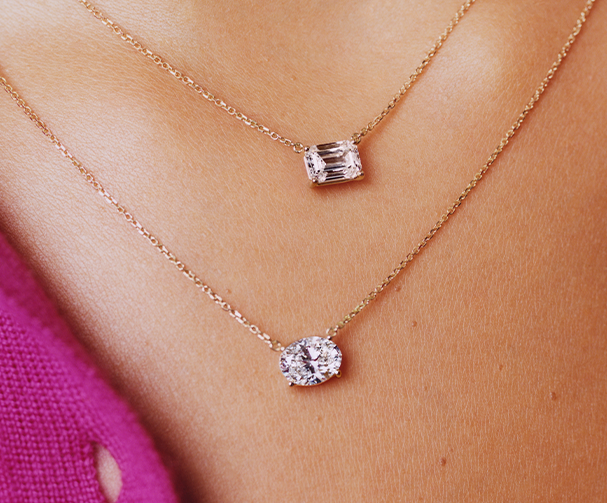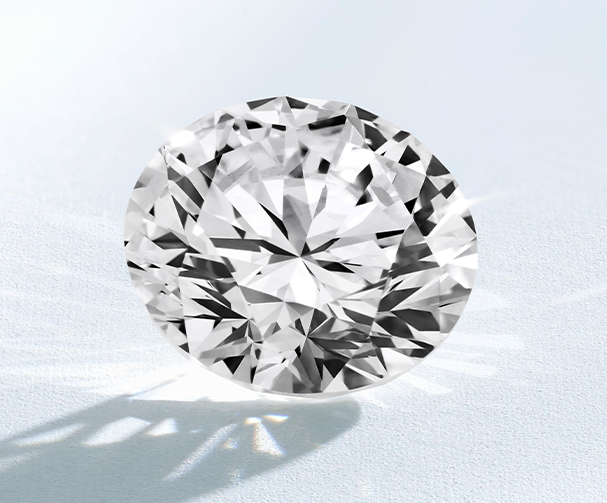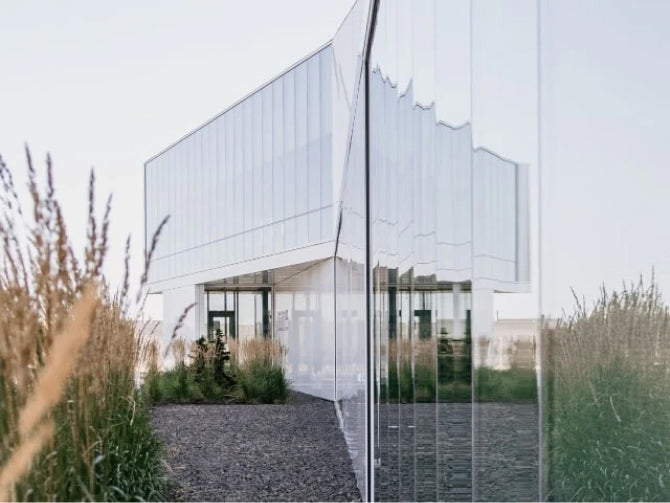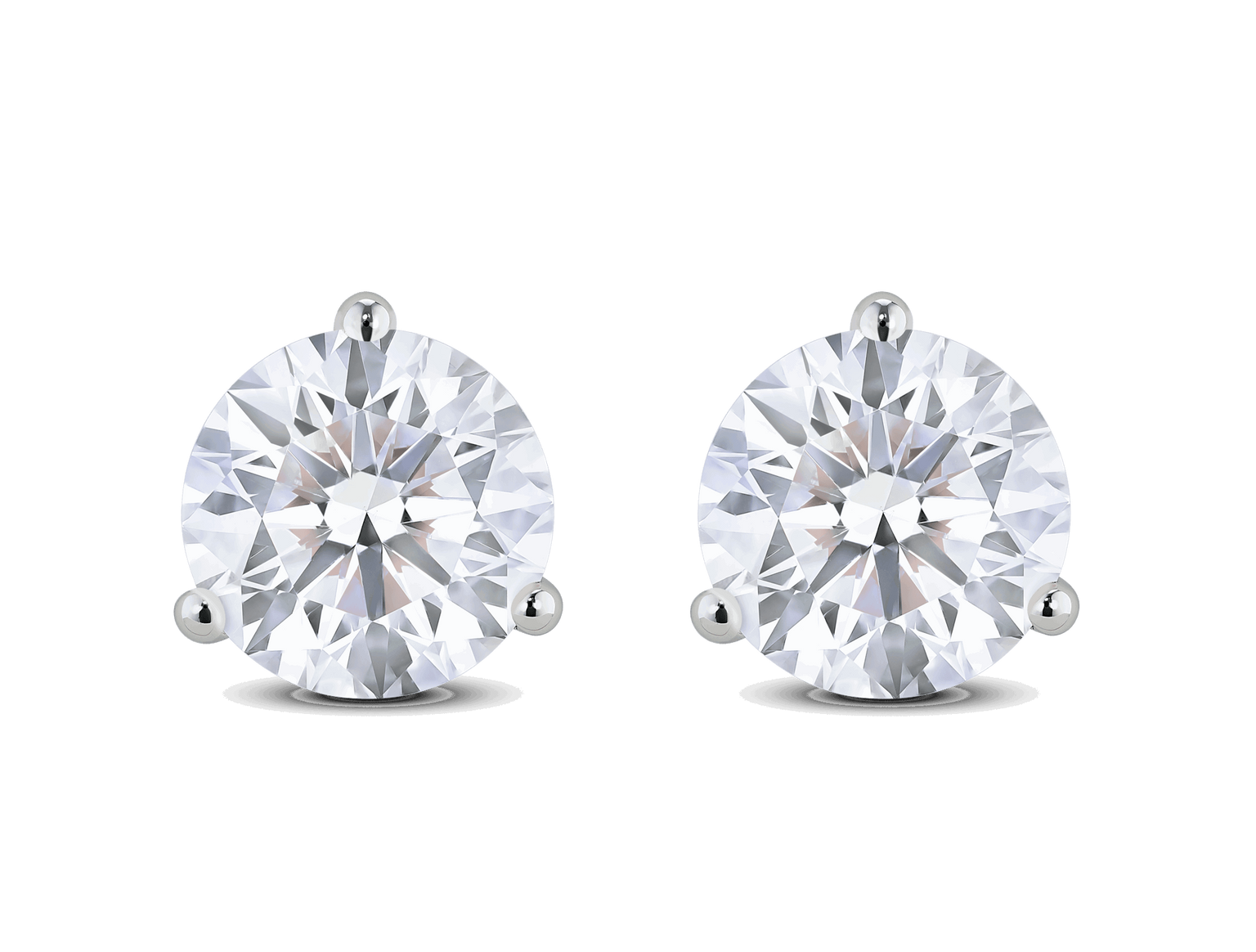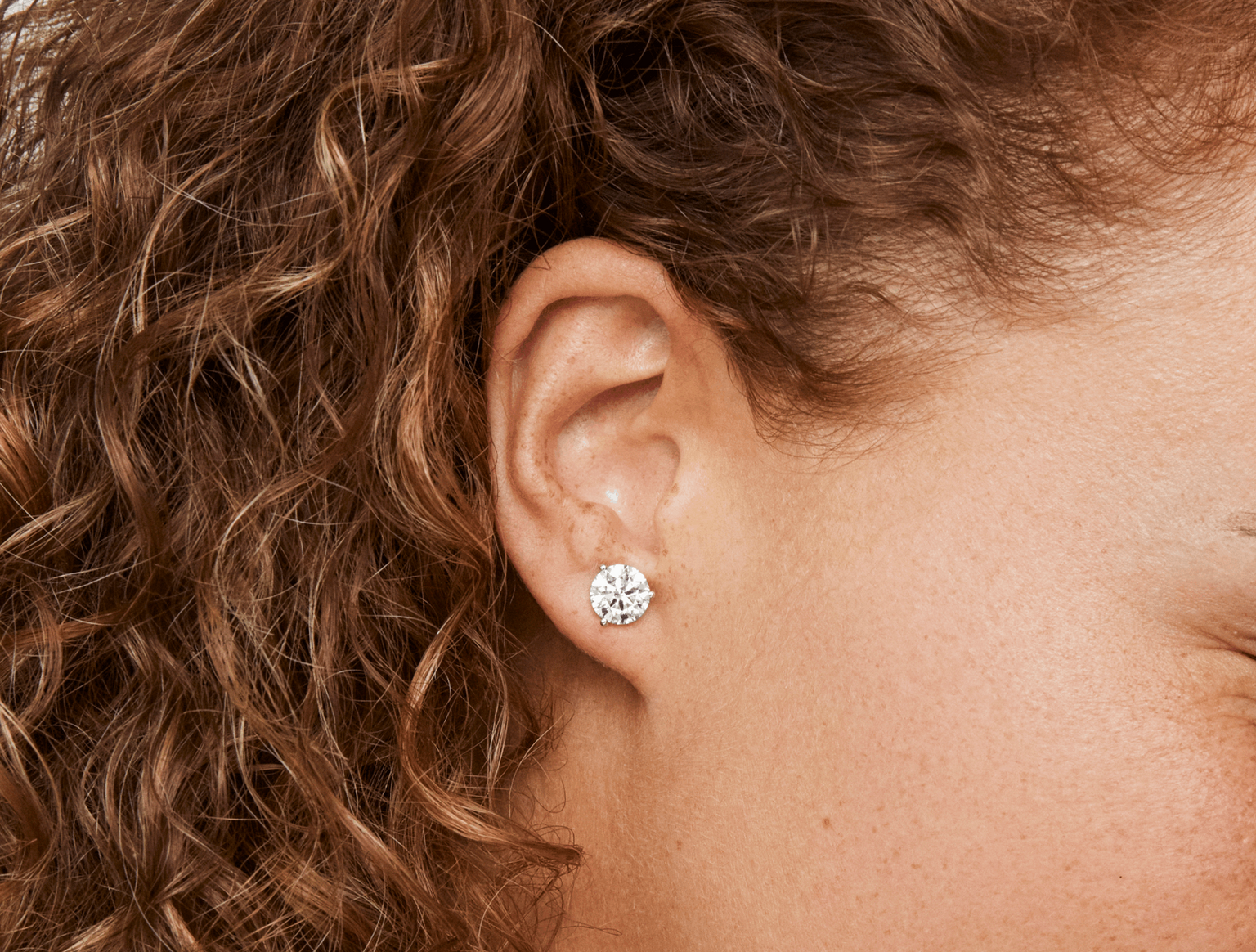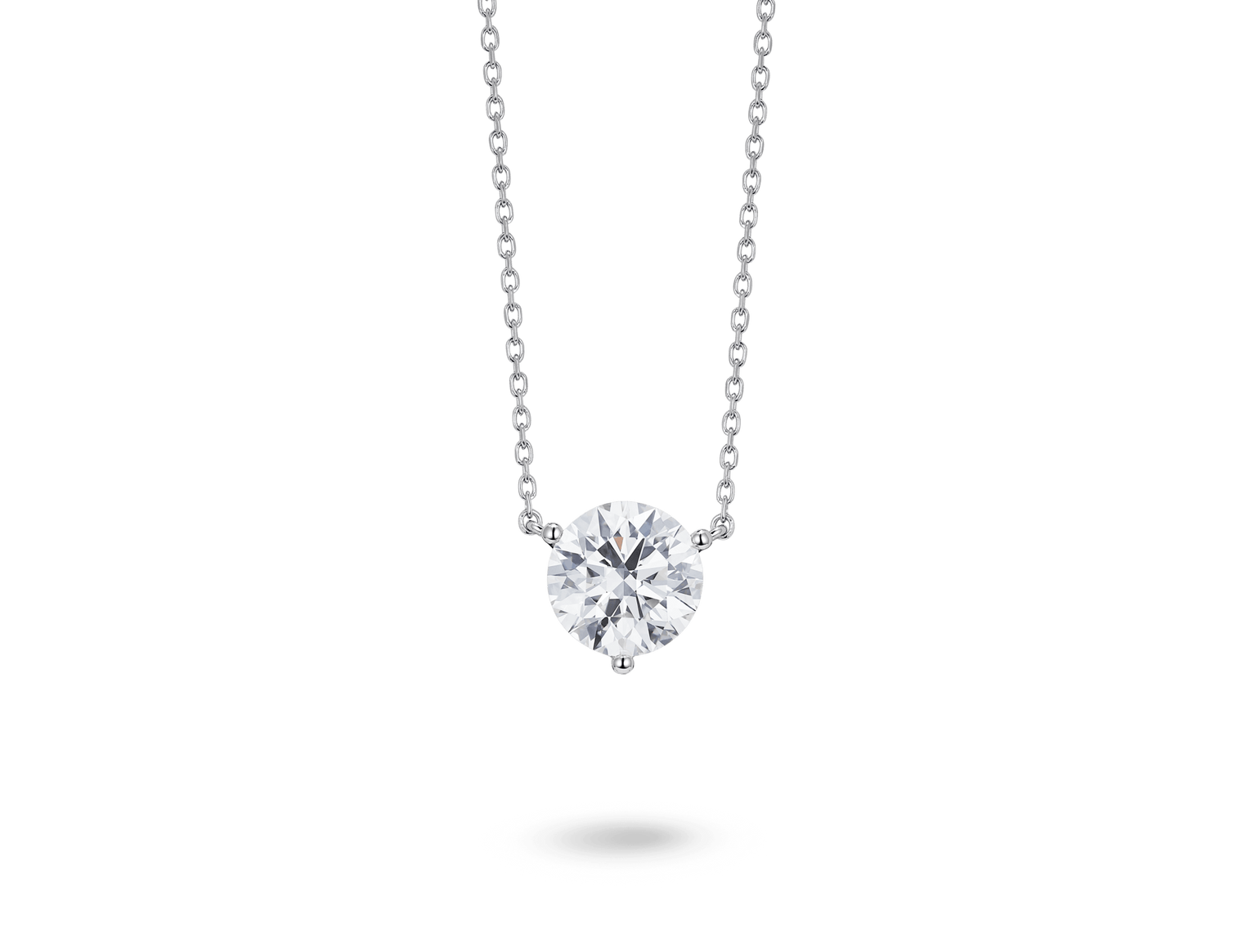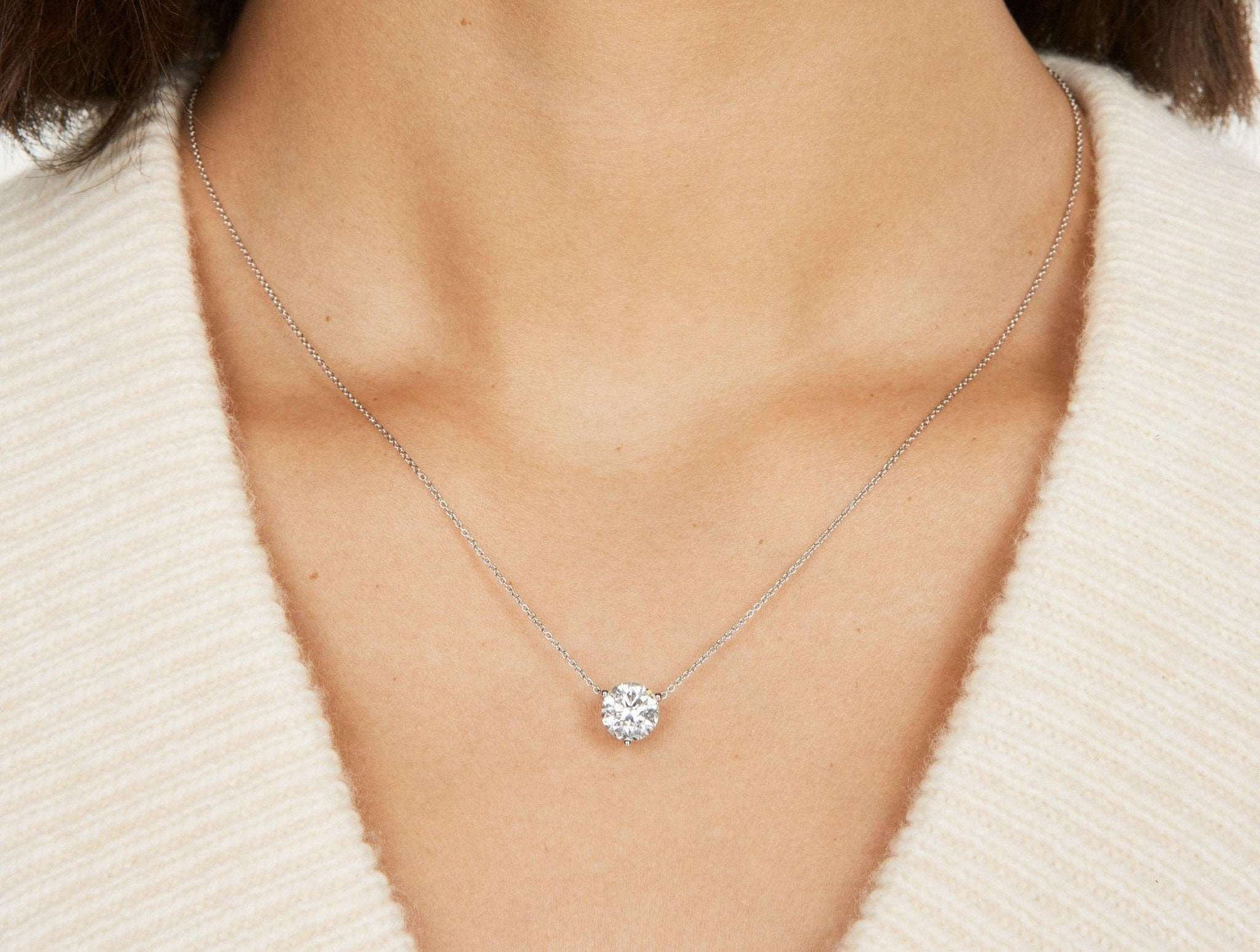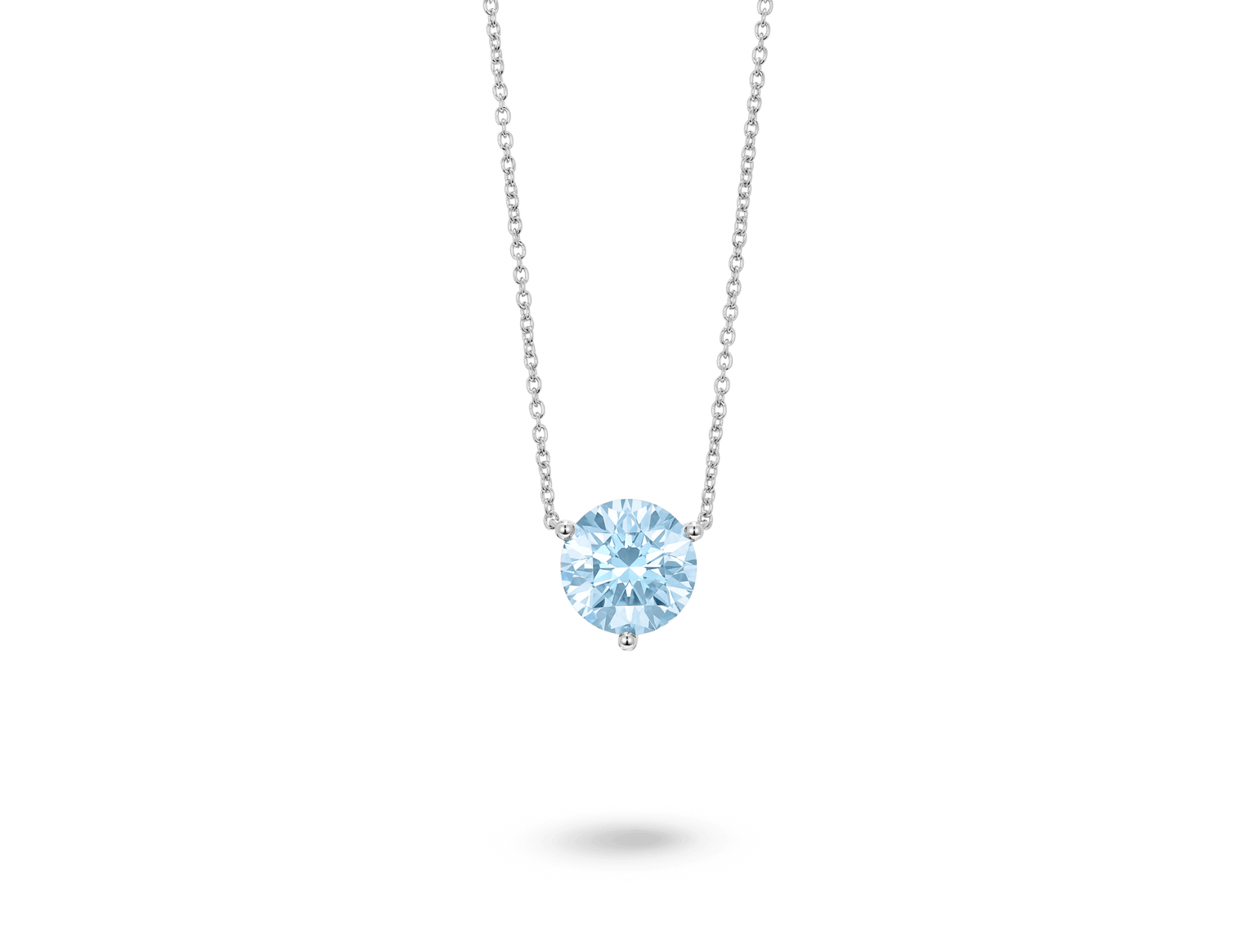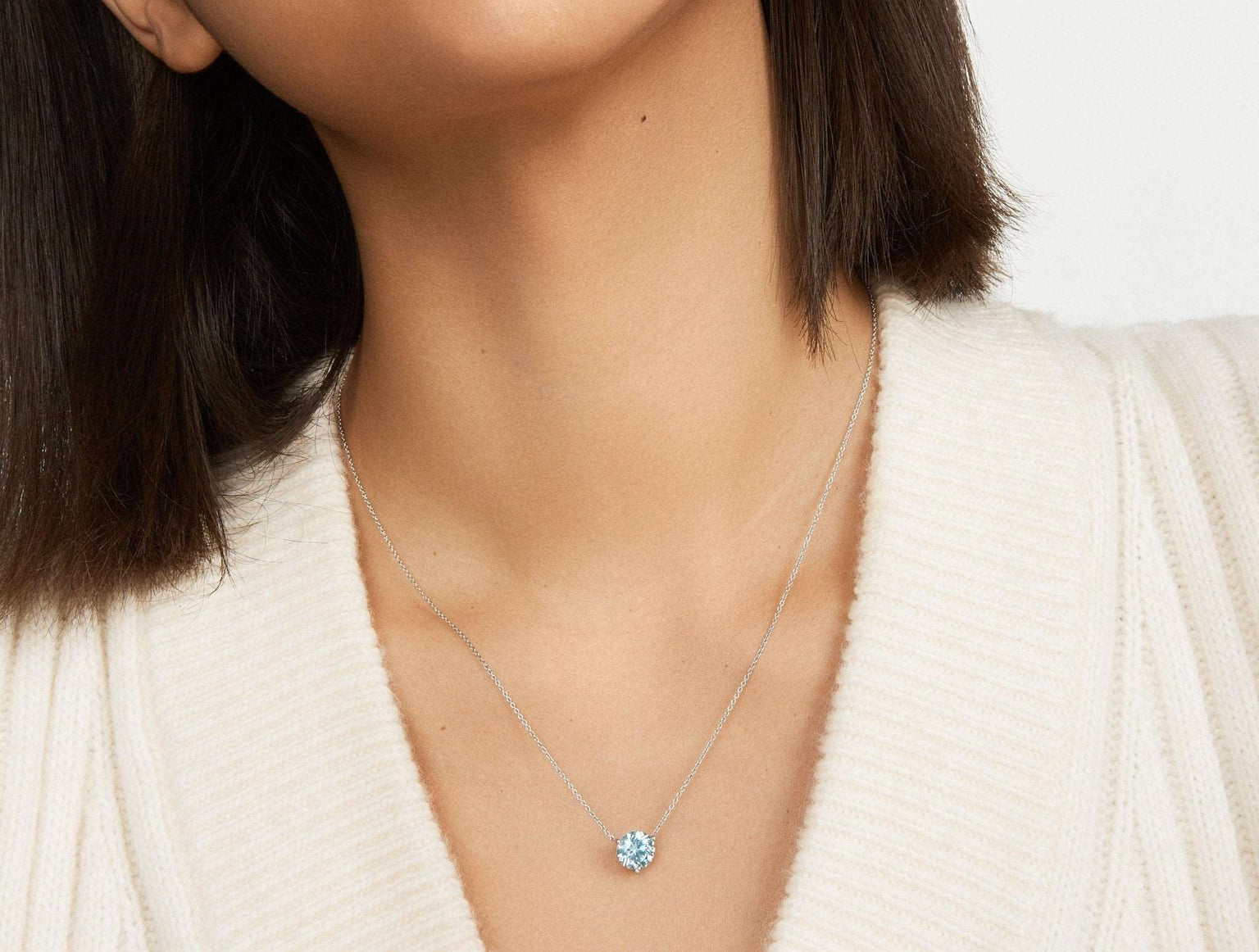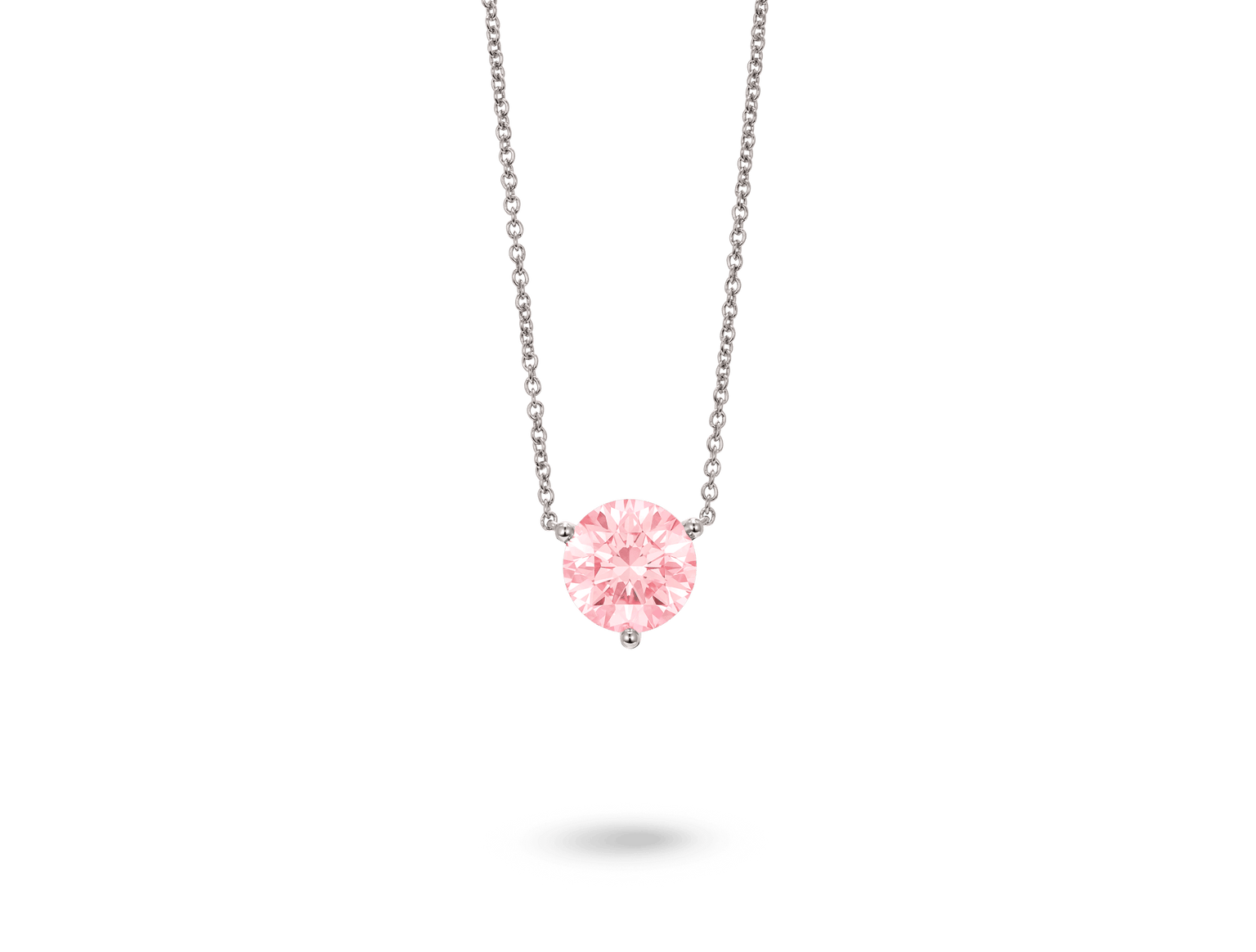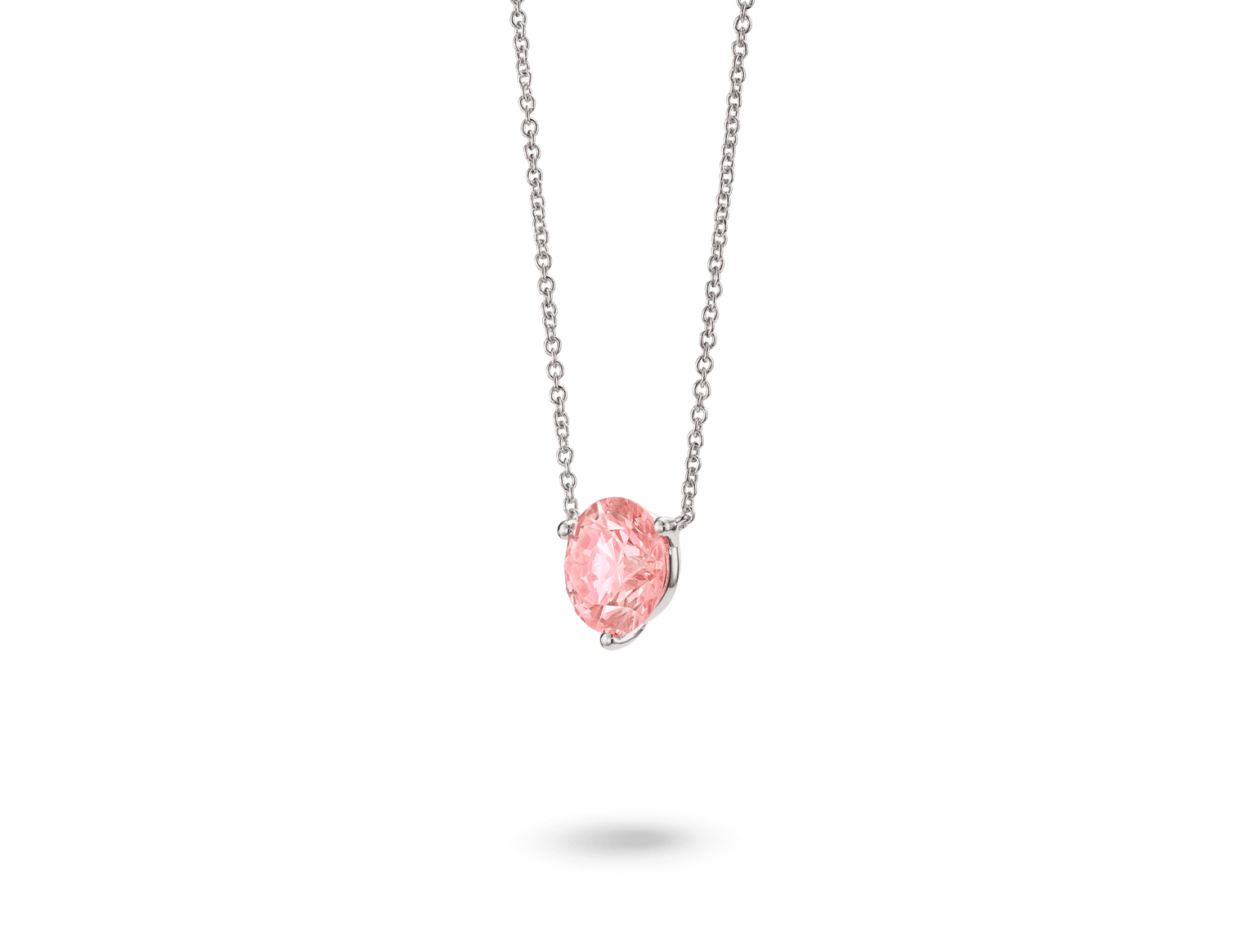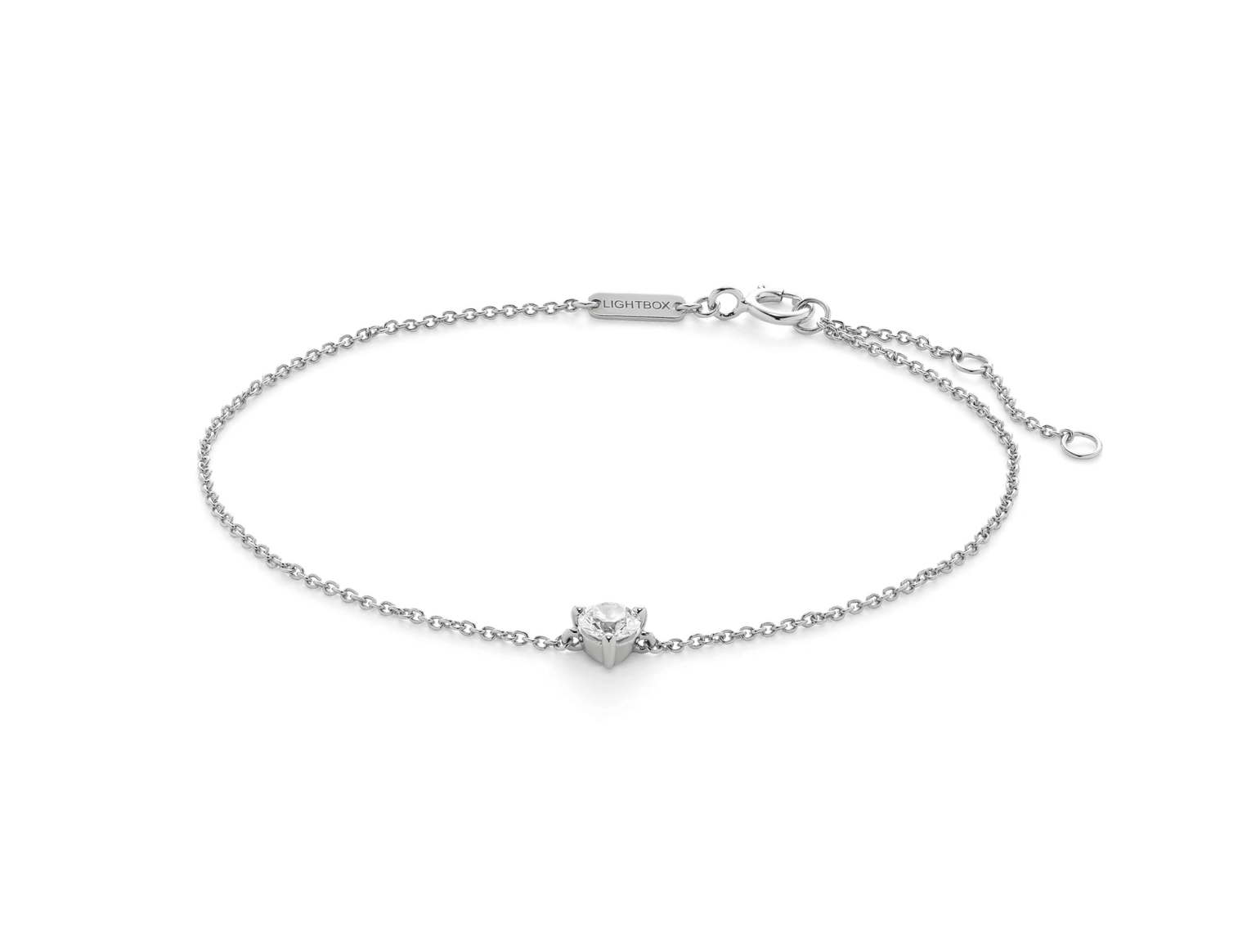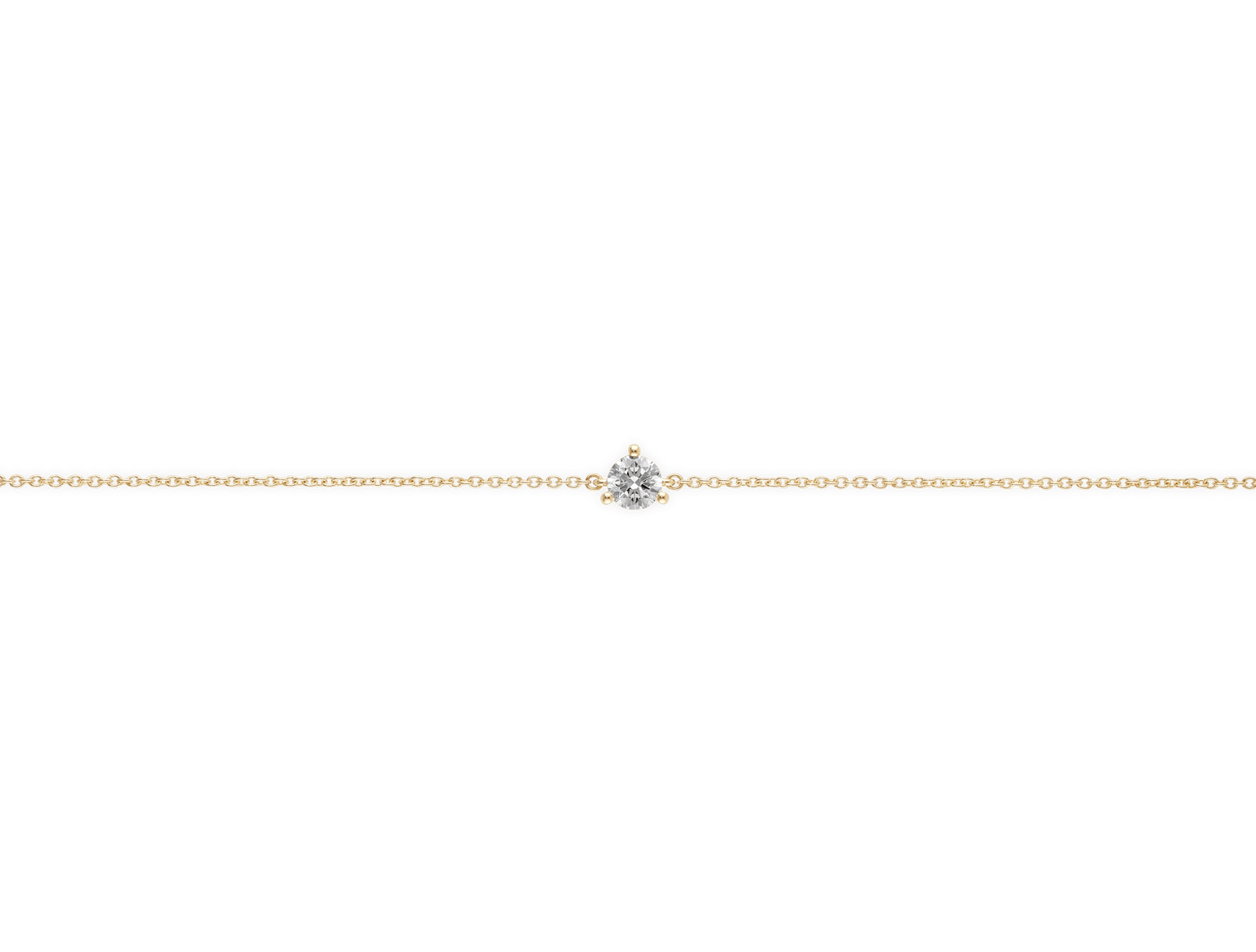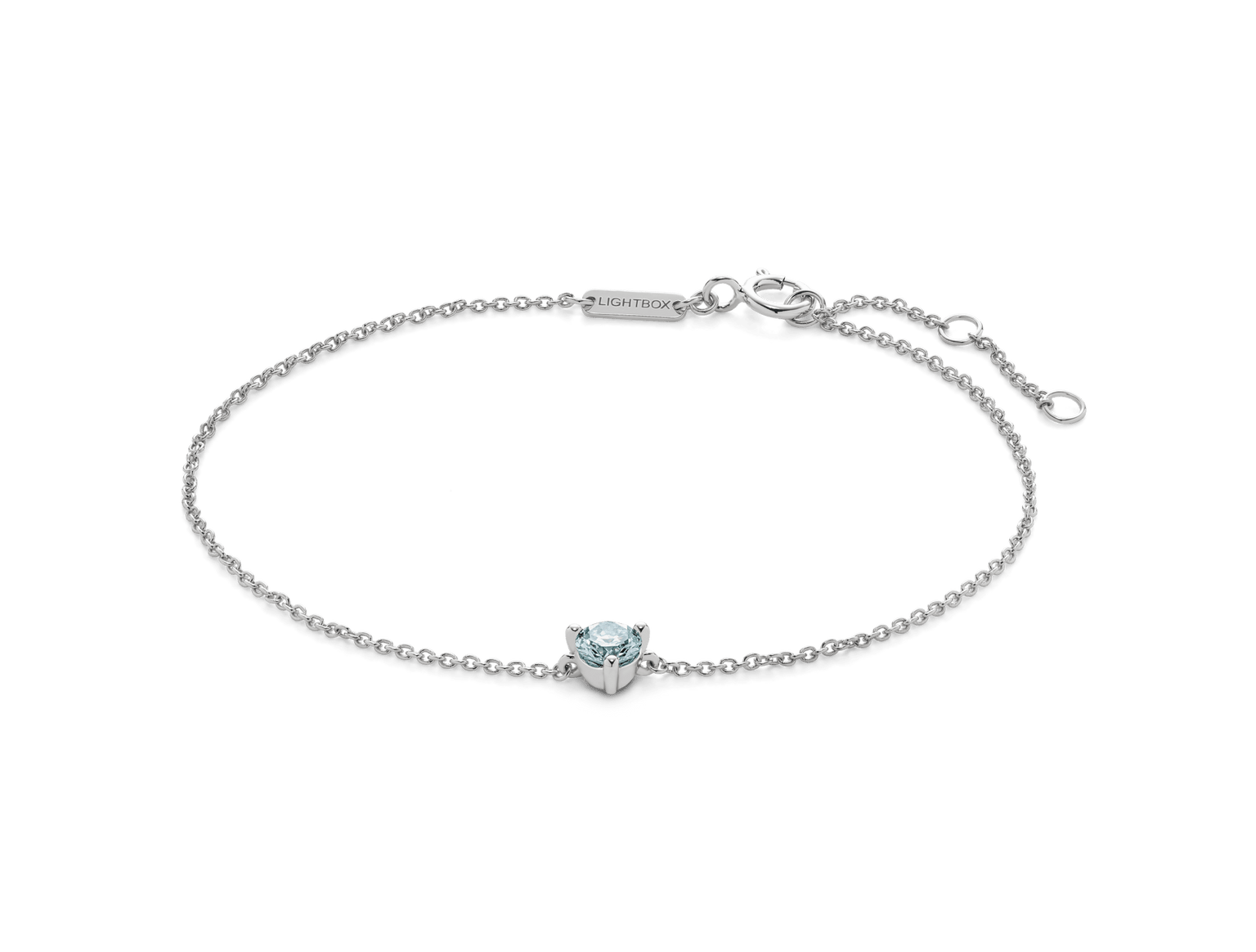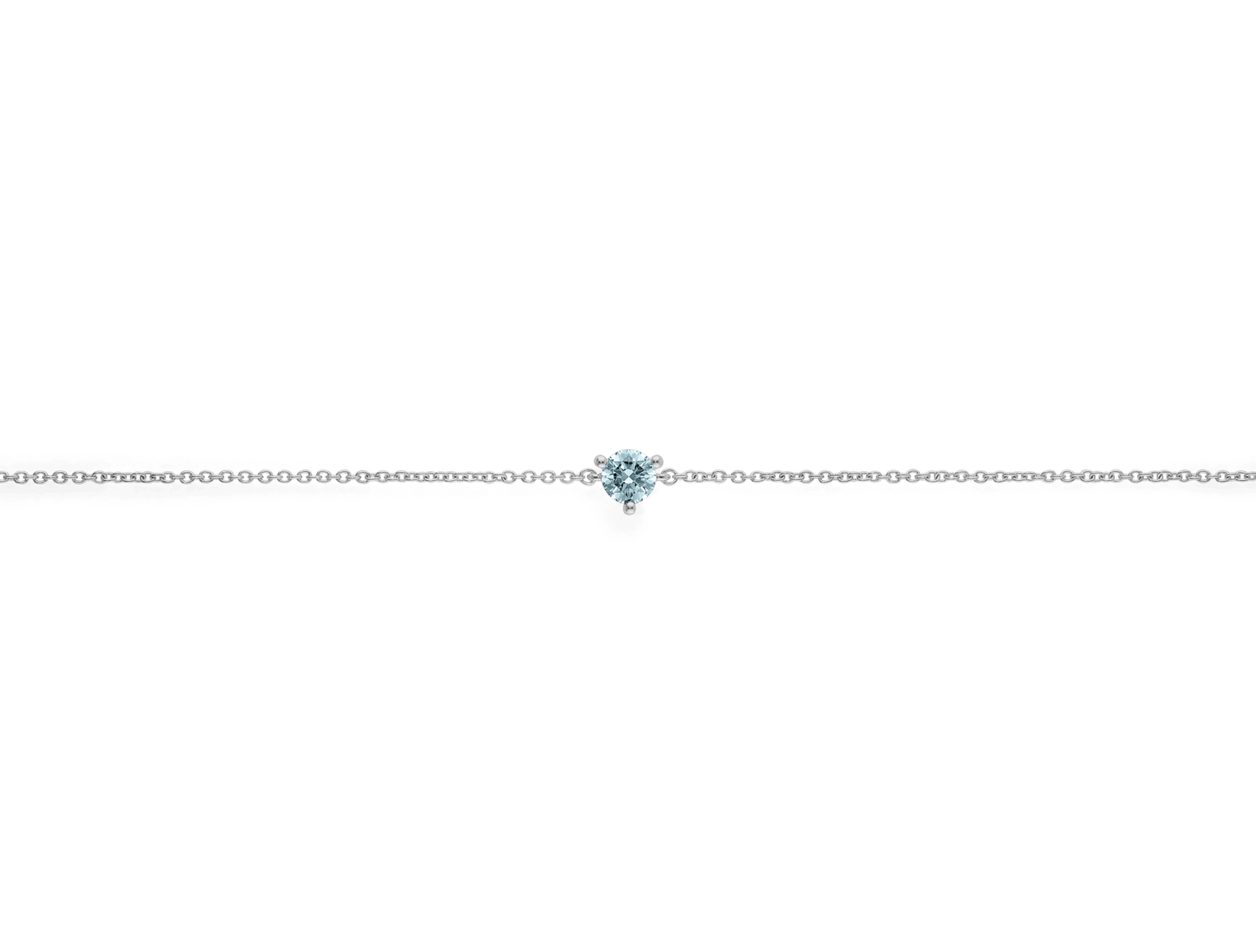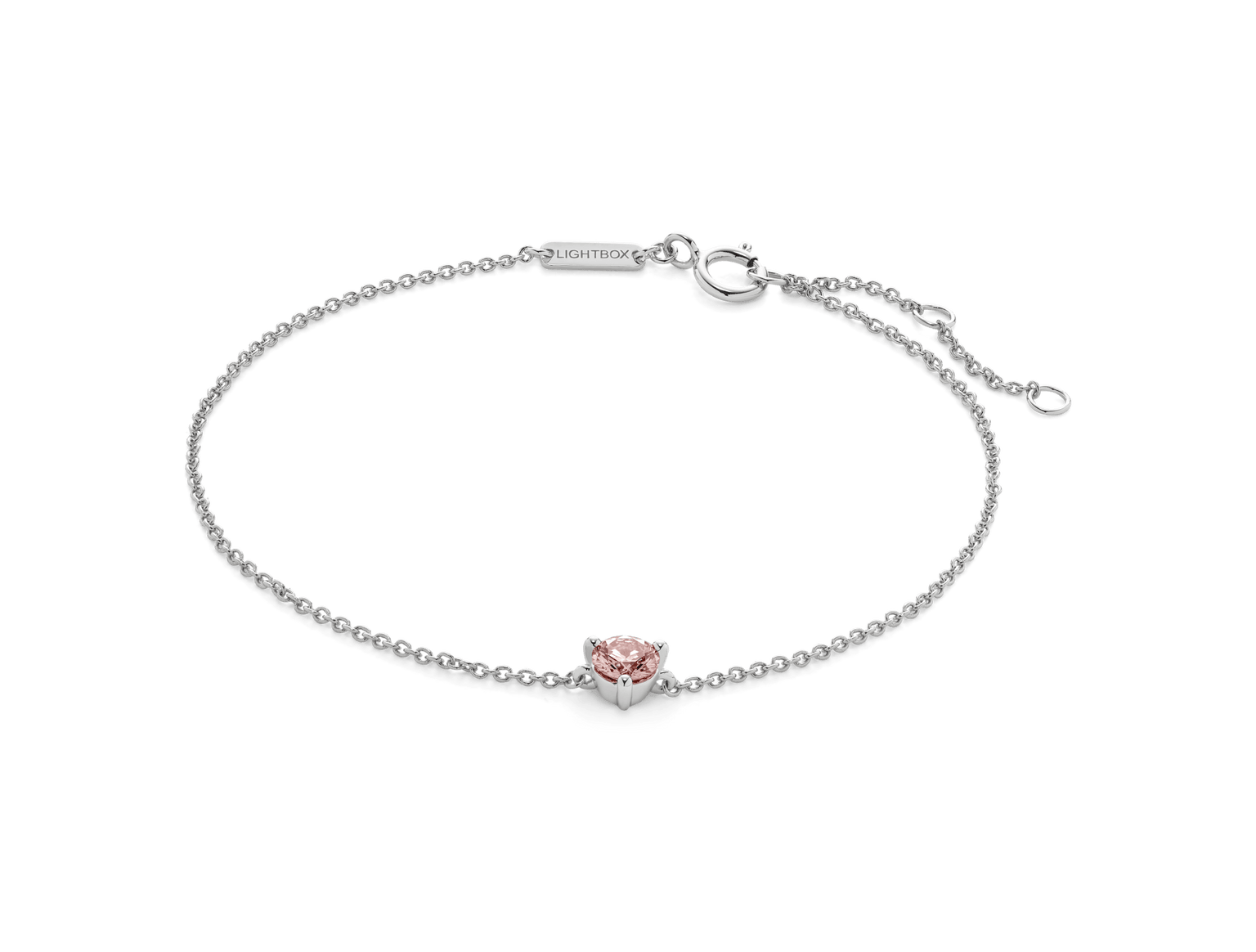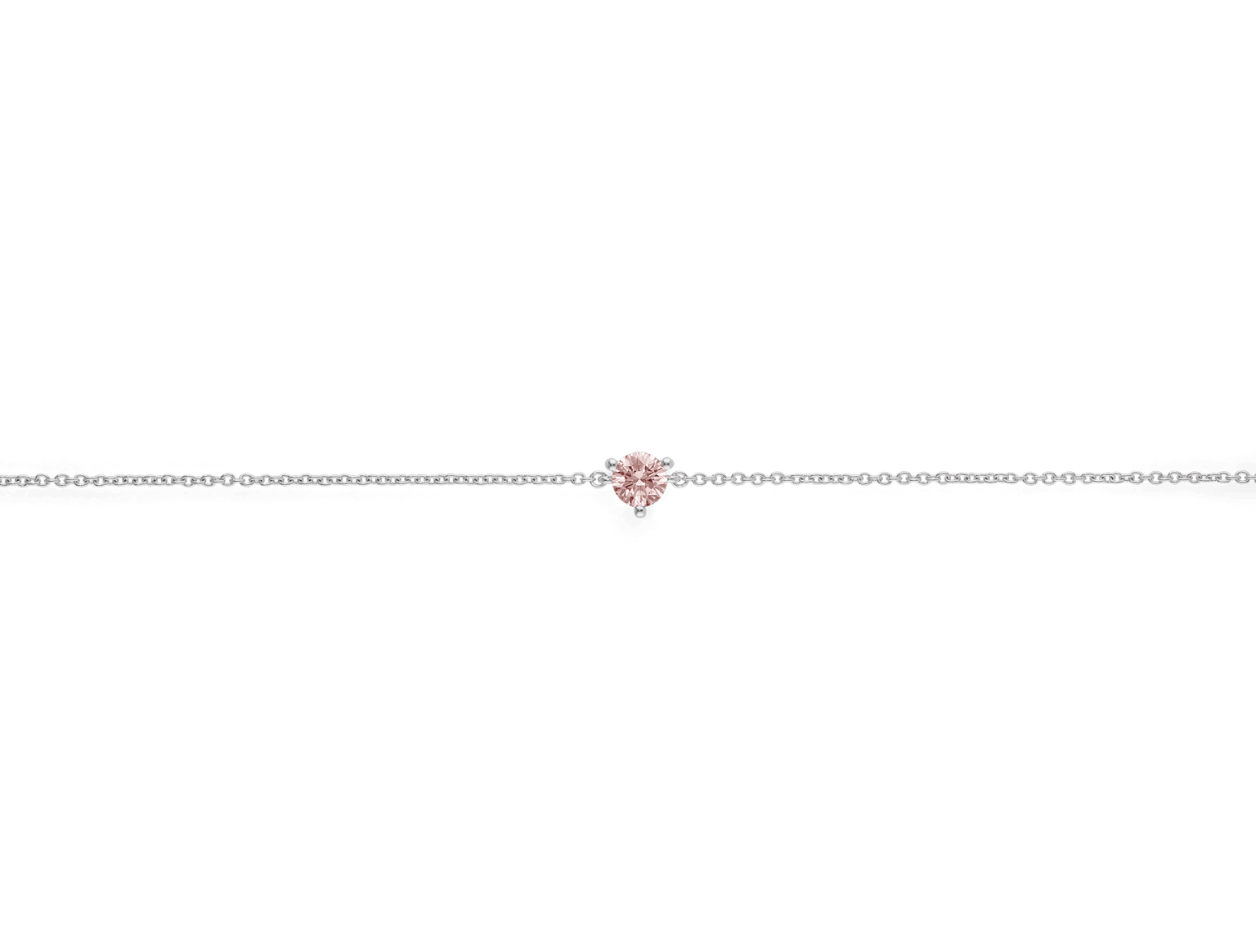There’s no denying the charm of a princess cut diamond. Its clean edges and crisp straight lines form a stunning square shape that is both modern and edgy. With a unique facet pattern that creates a brilliant sparkle, Lightbox's lab-grown princess cut diamonds offer an enchanting option for anyone seeking an attention-grabbing alternative to the timeless round brilliant. But like any other shape, shopping for a princess cut comes with its own set of considerations when deciding if this royal-worthy shape is right for you.
Ahead, we’re covering everything you should know before adding a princess cut diamond to your lab-grown Lightbox diamond collection, including the history of this popular cut, expert styling tips, the 4C's and more.
What is a princess cut diamond?
The princess cut is what’s known as a “fancy shape” diamond—meaning it isn’t classically round. It’s considered the most popular fancy shape, in fact, and the second most popular of all natural diamond shapes—second only to the classic round brilliant diamond. This sleek square cut ideally features four equal sides—with a length-to-width ratio no greater than 1:05:1—and is created using the inverted pyramid shape of a natural rough stone. So, if you were inclined to slice a rough diamond in half, you would be left with the perfect base foundation for a princess cut diamond.
Sometimes referred to as a rectangular modified brilliant or square modified brilliant, the princess cut usually contains between 50 to 58 facets—mostly located on the crown and pavilion of the stone. It also features two to four types of unique facet patterns (known as chevrons, chevron facets, or chevron patterns), which create the incredible sparkle and famous ‘X’ pattern that can be seen when gazing at a princess cut from above. Hugely sought after in jewelry for all occasions, the princess cut’s modern flair complements many styles, metals, and designs. In our Lightbox designs, we’ve chosen to include this shape in our dazzling lab-grown diamond earrings, necklaces and bracelets.

The history of princess cut diamonds
If you’re wondering when this show-stopping diamond shape first made its debut, the truth is, well, it’s a bit complicated. The creation of the princess cut as we know it today is usually credited to the Israeli-born Betazel Ambar and Israel “Izzy” Itzkowitz in 1981—although, its style and name can be traced back to the 1960s. It was in 1961 that a London-based diamond cutter known as Arpad Nagy created his “profile” cut diamond, which was also sometimes referred to as a princess cut. At around the same time, a South African diamond cutter named Basil Watermeyer created a similar rectangular cut with quarter moon facets, known as the “Barion” cut (which he named after a combination of his and his wife’s name...aww). This was followed by yet another iteration, known as the quadrillion cut in the 1980s—which also resembled the modern-day princess cut.
Originally inspired by the ‘X’ facet pattern of the square French cut, the natural princess cut diamond was the first of its kind to apply the traditional brilliant faceting pattern to a square-shaped diamond. Today’s princess cut diamond is one of the most recently-created cuts on the market. It’s a diamond that embodies the fire of a round brilliant diamond with a distinctive, modern edge. A favorite among royals and celebrities, you may have spotted it adorning the iconic princess cut rings of many celebrities, including Jamie Pressly, Emily Ratajkowski, and Kate Bosworth.

How to choose a princess cut diamond
Whether you’re looking for a lab-grown princess cut diamond—or any other diamond shape, for that matter—the 4C’s of diamond buying are always your go-to guide. Fortunately, with Lightbox, finding the right lab-grown stone for your lifestyle and budget is simple, with reliable, consistent quality standards that are among the highest quality you can find. However, there’s one exception when it comes to fancy cut diamonds like the princess cut: These diamonds do not fit into the GIA’s standard cut grading scale for natural or lab-grown diamonds. This absence of an industry-wide cut grade for princess diamonds means that there’s no unified expectation for what the “perfect” princess cut should look like. But navigating these 4C’s is not as complicated as it may seem—keep reading to discover our top tips for choosing your dream princess cut jewelry piece.
Cut
What’s a princess cut diamond without exceptional sparkle? The fire and brilliance that we all love so much about Lightbox’s lab-grown diamonds are represented in the quality of the stone’s cut — and this is no different with the princess cut! That’s why the most important (and perhaps the trickiest) of the four C’s to consider if you want your princess cut to really sparkle is cut quality. When it comes to sparkle, the princess cut is similar to the round brilliant diamond with show-stopping brilliance in a unique, distinctive shape that’s guaranteed to turn heads.
Chevrons
Princess cut diamonds are available with varying numbers of facets and different patterns on the crown—and usually featuring two, three, or four different chevron patterns. The lab-grown princess cut diamonds in our Lightbox collections are always perfectly equal and symmetrical in length, rather than rectangular, with two chevron facets cut to precision for maximum sparkle.
French Corners vs. Bezel Corners
When looking at the two most popular facet styles at the corners of your princess cut, you’ll notice one of two types: French corners or bezel corners, the former of which is used in our Lightbox princess cut lab-grown diamonds. These are all a matter of personal preference and don’t necessarily affect the stone’s value. As with all diamonds, whether they’re lab-grown or natural, always remember to choose the option that really speaks to you!
Color
Evaluating the color of a princess cut diamond is somewhat subjective to your personal preferences, but there are a few key things to keep in mind. For one, both natural and lab-grown princess cut diamonds may show slightly more color than a comparable round brilliant diamond. Fortunately, you don’t need to worry about this when choosing your princess cut design at Lightbox, since all of our lab-grown princess cut diamonds are consistently categorized as “near colorless” for a high-quality, luxurious look - or 'colorless' for our Lightbox Finest™ stones.
Clarity
Just like the traditional round brilliant, the princess cut’s superior brilliance is known to help disguise visible inclusions in natural diamonds better than most other cuts. For a natural princess cut stone, you’ll want to look out for inclusions near the corners, as these can potentially weaken the edges and make the diamond more prone to breaking or chipping. At Lightbox, we believe that one of the major benefits of lab-grown diamonds is the ability to use our cutting-edge technology to create princess cut stones that always reach our top clarity standards of VS clarity or better for visible beauty, durability, and value.
Carat
Whereas natural round brilliant diamonds utilize less of the rough diamond, a princess cut can use as much as 80% of the rough materials. This amazing carat weight yield creates more competitive pricing with minimal waste in natural princess diamonds. Lightbox’s core collection of lab-grown princess diamonds are always competitively priced at 800 USD per carat (or 1500 USD a carat for our Lightbox Finest™ stones), with each batch being produced to the same transparently priced standard.
How to style your princess cut diamond
Our lab-grown princess cut diamonds exude style, and confidence for anyone who wears them. And if you’re a fan of the princess cut, we have good news: This cut works effortlessly with so many different styles and designs. Known for making a bold statement, its sleek appearance can be added beautifully to classic vintage styles or modern geometric pieces. The princess cut makes an exceptional alternative to the more traditional round brilliant cut in our perfectly saturated pink or blue lab-grown diamond designs.
We recommend a four-prong solitaire design — like these stunning solitaire studs — to allow the true beauty of the princess cut to shine through. To mix it up and add a splash of color to match your personality, try a bolder Lightbox princess cut design.
Caring for your princess cut diamond
The sharp, angular corners of the princess cut may be more prone to snagging, and therefore chipping, if not cared for properly. Always set your princess cut diamond with secure prongs to help protect its vulnerable corners from damage. All of our prongs are expertly hand-set on each piece to ensure that your princess cut design is always protected. If you lead a highly physical lifestyle, or work with your hands frequently, it may be worth considering a princess setting that also includes a halo or the highly popular bezel around the stone.
When storing and cleaning a princess cut jewelry piece, always remember to follow the standard jewelry care protocol by keeping away from harsh chemicals, cleaning supplies, and checking the prongs periodically to make sure they are still secure. Check out our guide on how to care for your Lightbox jewelry for more detailed advice. No matter which way you look at it, the gorgeous brilliance of a princess cut is fit for modern-day royalty.
